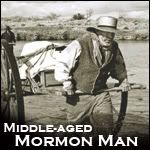Our favorite tool for star gazing has been the Miller Planisphere. This chart allows you to see what stars and constellations are overhead at any time of day or night, any month of the year. There are others available, but this is my favorite. The sky wheels are also available for southern lattitudes, such as Austrailia.
We've also had the great fortune of having a NASA geek (self-proclaimed term) in the family, Kris (who is so cool, she can count down from 10 and put a 4 minute hold in it, AND recently had a project go up in the cargo bay of a recent Space Shuttle launch--the Geek's dream come true), ~now back to the subject~Kris, the NASA geek, who took us out to look at constellations, telling their stories and legends. One of my favorite things Kris taught was how to find certain bright stars and constellations. Betelgeuse (Beet-ul-juice) is the bright red star in the right arm pit of Orion (his right, not yours). A familiar name, for Harry Potter fans, is at his other armpit...Bellatrix. Rigel is at his foot.
Everyone can find the Big Dipper, yes? Well, you follow the arc of the handle to Arcturus, then spike across to the bright star Spica. The Big Dipper link teaches you how to find other stars, as well as Arcturus, using the Big Dipper as reference.
The Big Dipper at upper right
We can also find reading comprehensions about stars and legends at edhelper.com suitable for all age levels. You will have to type something like..."stars" or "night sky" in the search box. One of the tittles available is Pictures in the Stars, Legends in the Sky. I cannot post a link directly to this tittle, sorry. edhelper charges a $20/year memberhip fee for full printouts. You can download and print portions of the readings for free.
Wikipedia is another good source for information.
A fun project is to take a black umbrella (dollar store is fine) and paint constellations in Day-glo paint on the inside using a circular star chart for any given month as reference, such as a star chart from Sky and Telescope magazine or an old Night Sky magazine (no longer published).
Using your umbrella center as your night sky center, determine a North, East, South and West. Choose a constellation to start with and paint the "stars" as dots and spots where it would be on the inside of your umbrella. The kids love this project and it gives them a large reference to look at when star gazing, and something fun to carry when it's raining. Naturally, I cannot find our umbrella today, but I have done this project with Cub Scout groups and Activity Day girl groups.
When we lived in the Baltimore area, we would take field trips to the Goddard Space Center in Greenbelt, Maryland, to watch launches. At this website you can find when launches are going to happen or just explore what is available. The Space Center also has a Visitor's Center open to the public.
Another wonderful resource is the Nasa Website, which includes a Kids Club.
The Hubble Picture Gallery is fun.
The Eskimo Nebula and the Cat's Eye Nebula
You can check with google to see if there are any Observatories or Planitariums in your area that offer night sky shows or outdoor sky watching with Telescopes. My sister, Kris, said NASA Geek, volunteers at her local observatory. They are out there, astronomy geeks and observatories.
It really doesn't take expensive equipment to stargaze and have fun. The naked eye, a pair of Binocculars, and an inexpesive telescope are sufficient for our little backyard gazing. Someday we'll have a bigger one and we'll see more things in the sky, but today, this is good.












Hi - I'm visiting your site for the first time and really enjoying it! My family has just studied constellations, too. (February was a good month for viewing Perseus, perfectly coinciding with the Percy Jackson movie....)
ReplyDeleteWe found a great site that gives a video tutorial each month, which is really helpful to walk us through what we'll be seing in the sky. Here's the link: http://amazing-space.stsci.edu/tonights_sky/. They haven't updated to April's sky yet, but probably soon. Anyway, thanks again for your post (I love the umbrella idea!)
thanks for the kudos and the info. I'll visit that website.
ReplyDelete